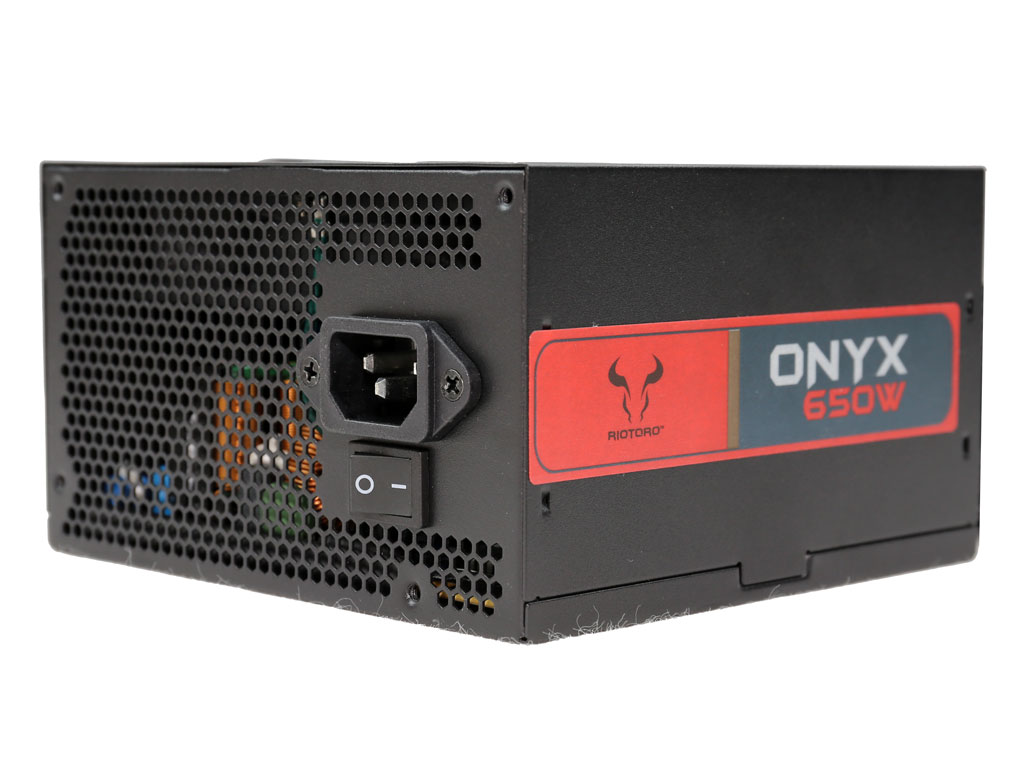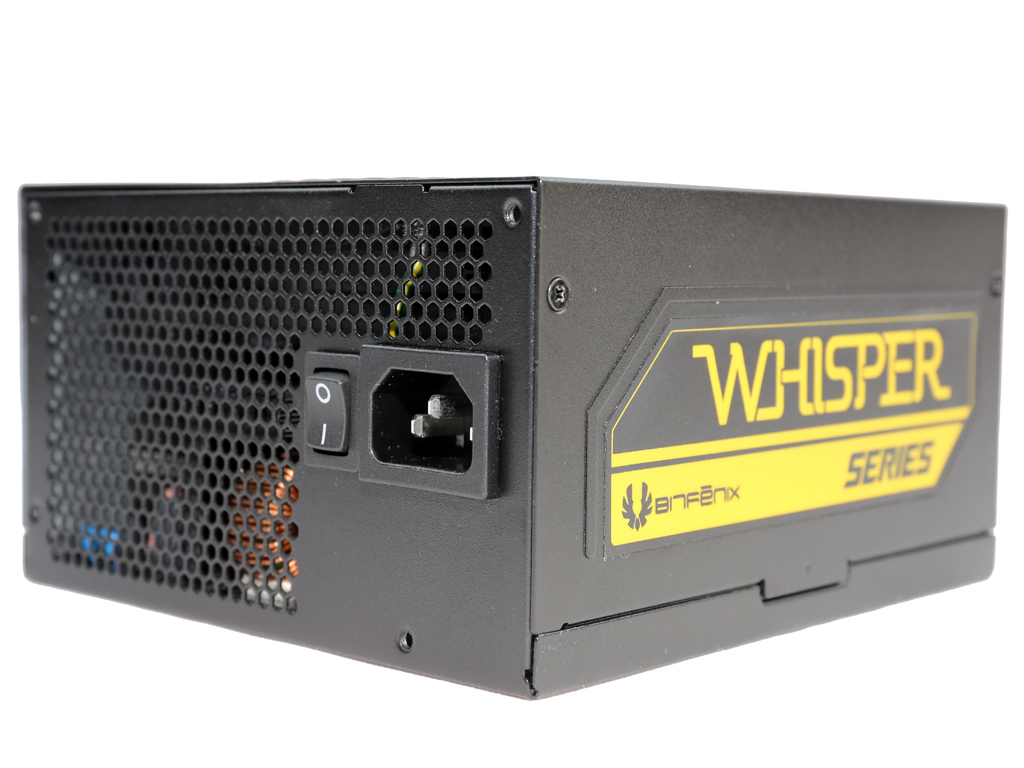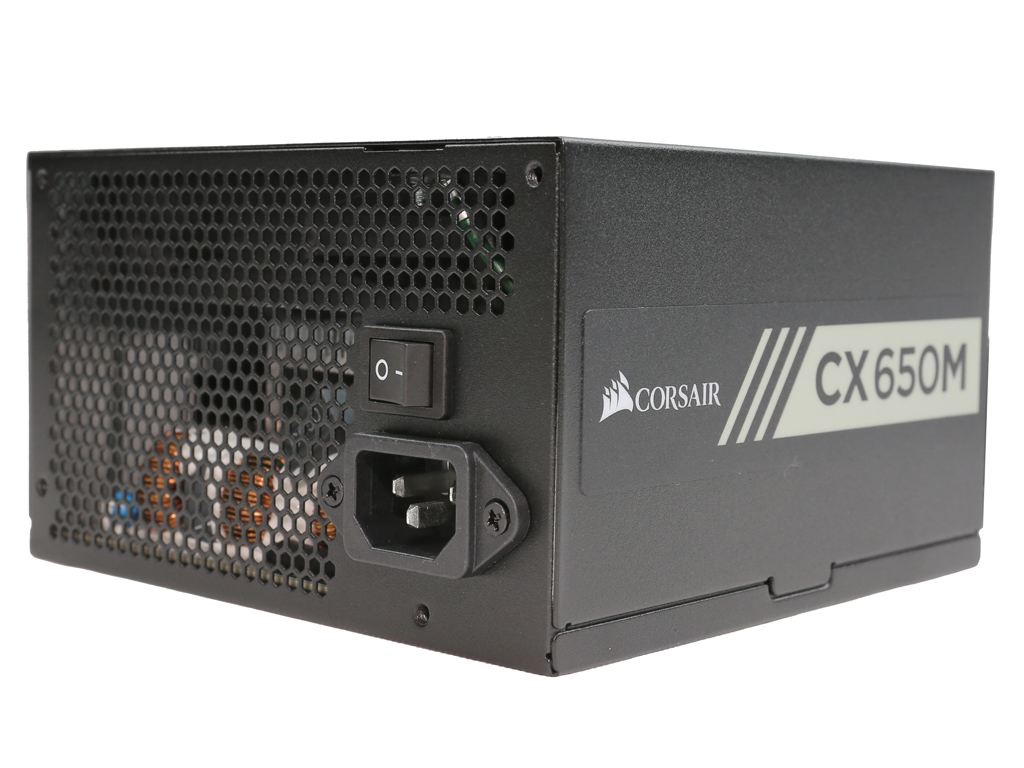Riotoro Onyx 650W PSU Review
Why you can trust Tom's Hardware
Load Regulation, Hold-Up Time & Inrush Current
To learn more about our PSU tests and methodology, please check out How We Test Power Supply Units.
Primary Rails And 5VSB Load Regulation
Load Regulation testing is detailed here.
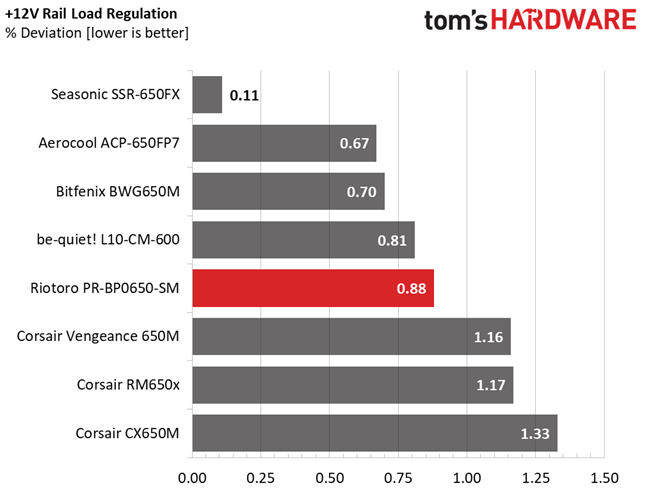
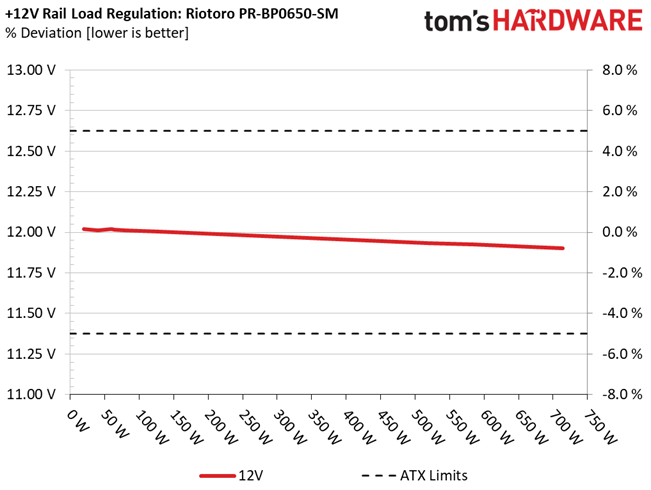
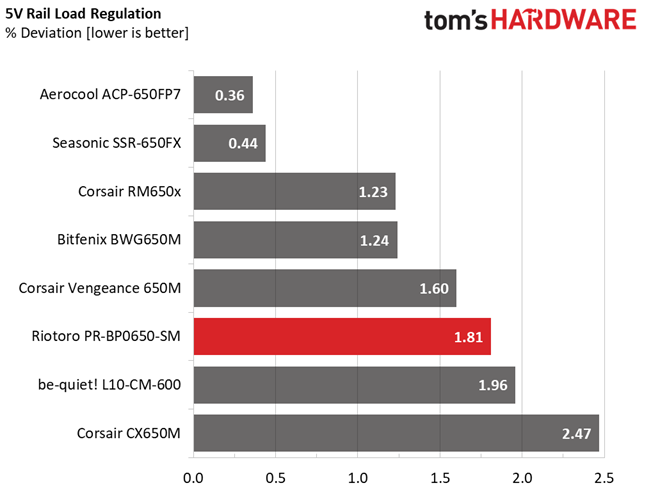
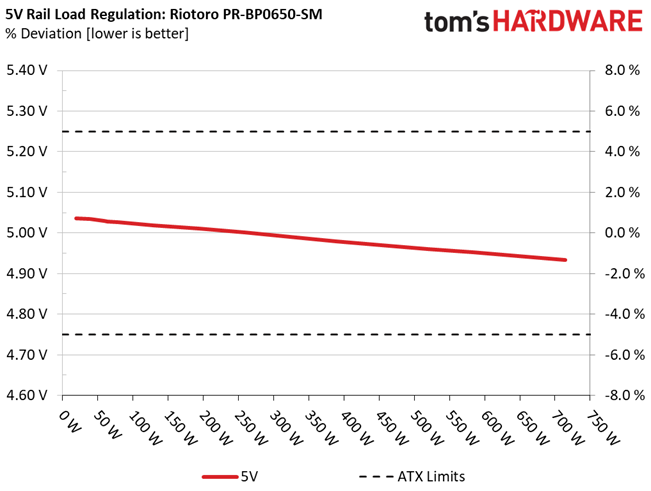
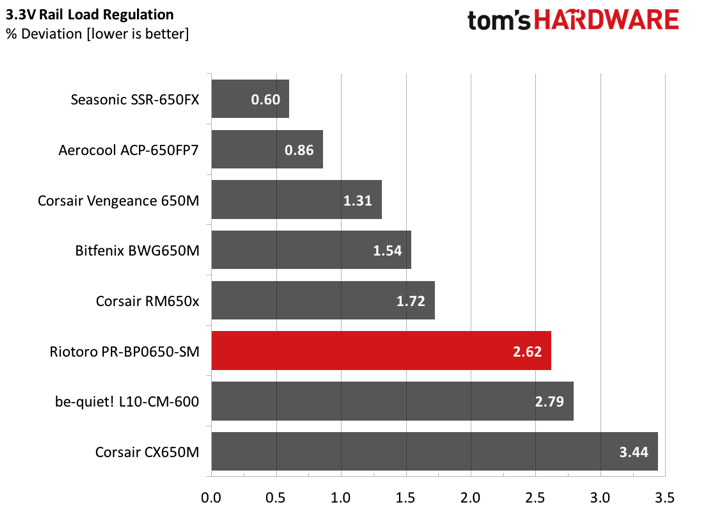
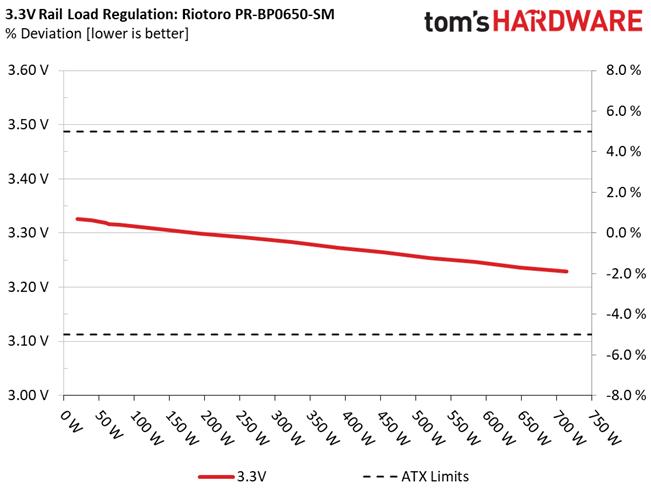
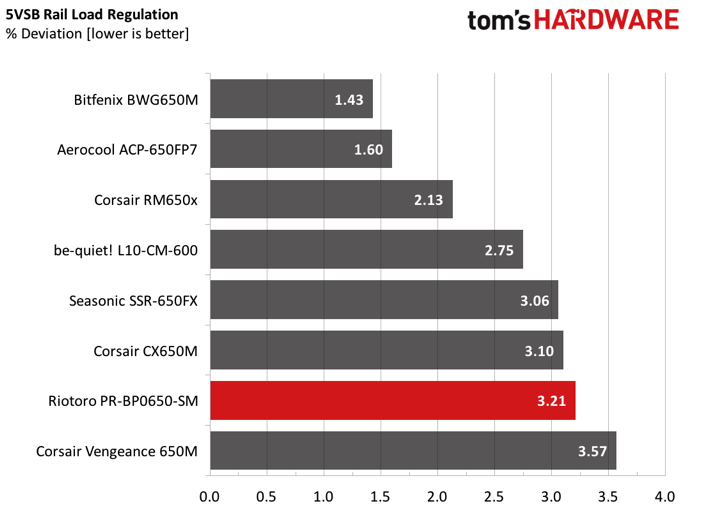
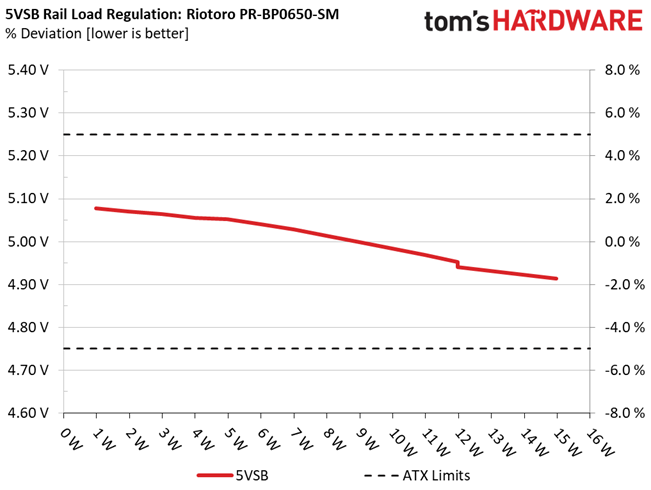
Hold-Up Time
Our hold-up time tests are described in detail here.
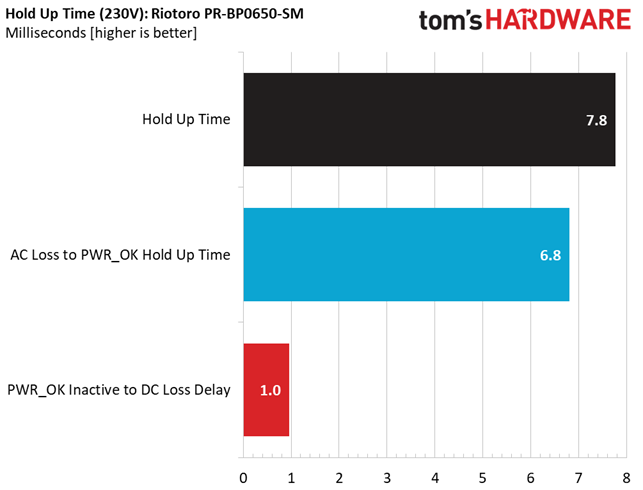
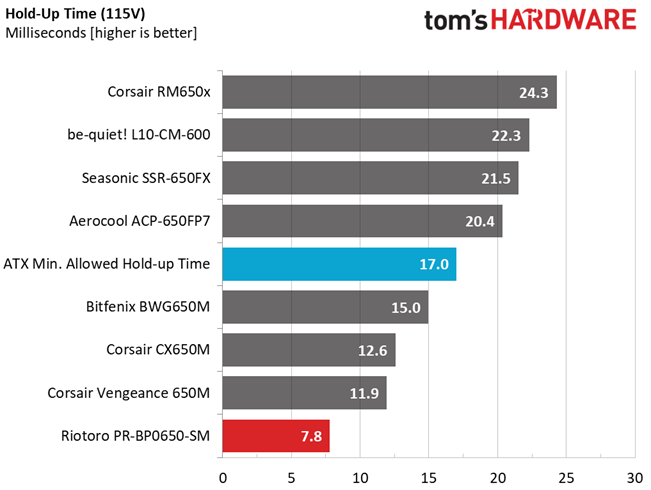
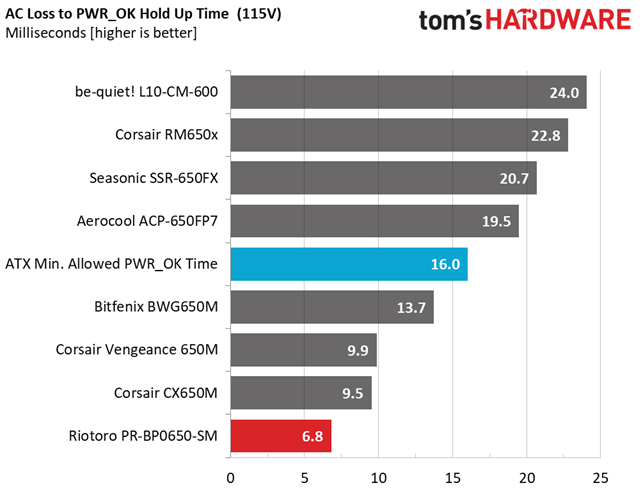
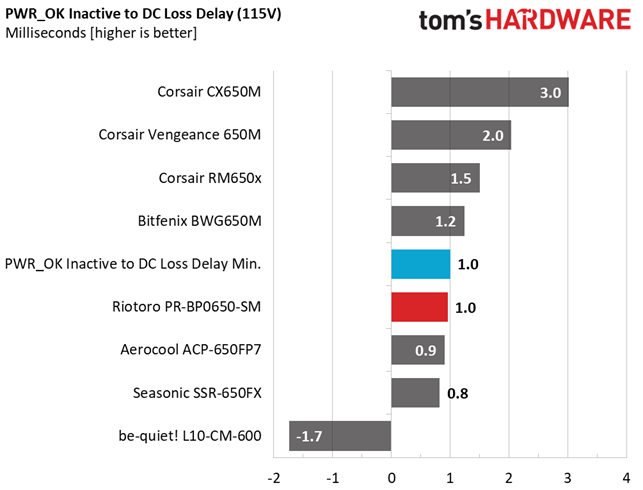
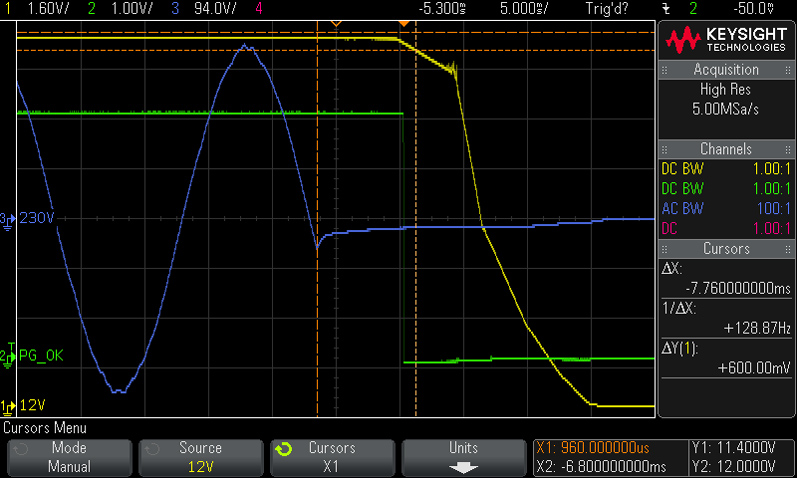
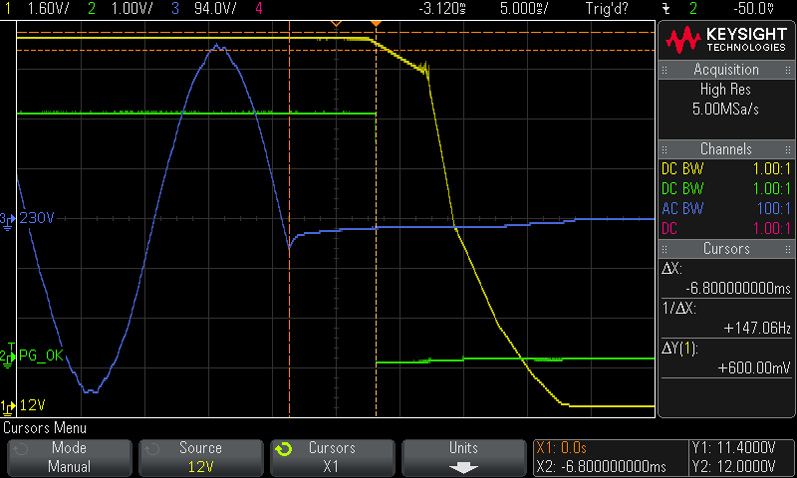
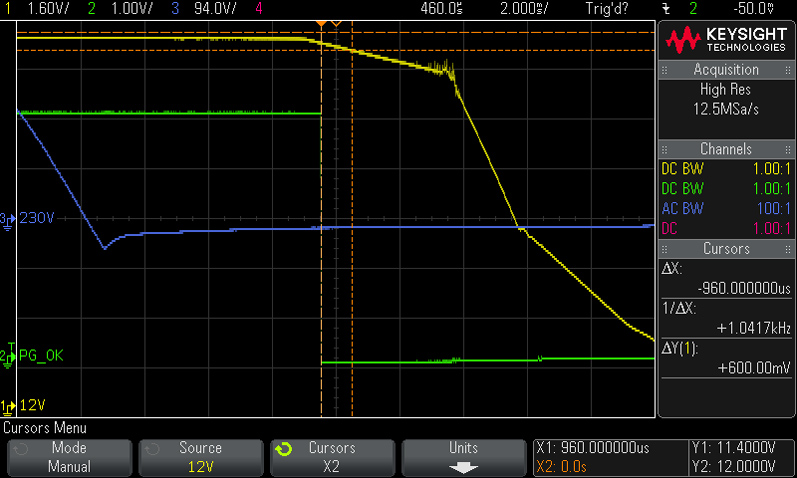
The hold-up time we measured is ridiculously low. GW uses low-capacity bulk caps to save a few bucks, resulting in a hold-up time lower than 8ms. As a point of reference, the ATX spec requires at least 17ms. This is a major downside for this PSU. Great Wall should have used bulk caps with at least double the capacity.
Inrush Current
For details on our inrush current testing, please click here.
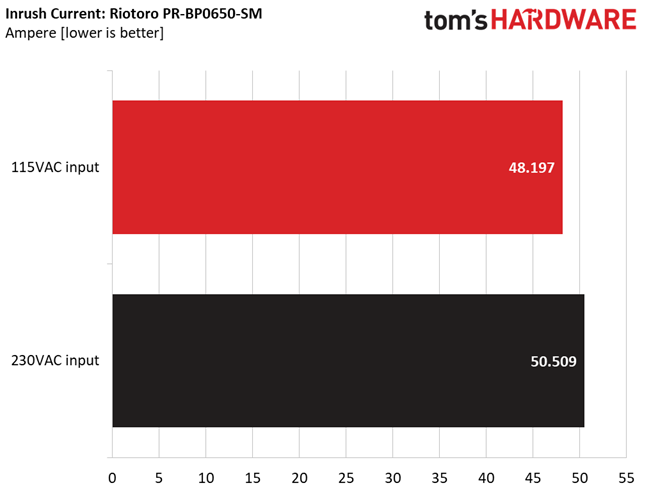
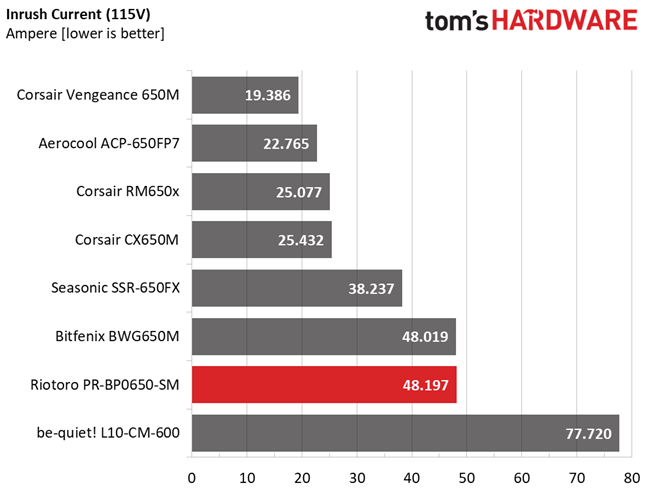
The small NTC thermistor does an average job in restricting the inrush currents.
Load Regulation And Efficiency Measurements
The first set of tests reveals the stability of the voltage rails and the PR-BP0650-SM's efficiency. The applied load equals (approximately) 10 to 110 percent of the PSU's maximum load in increments of 10 percentage points.
Get Tom's Hardware's best news and in-depth reviews, straight to your inbox.
We conducted two additional tests. During the first, we stressed the two minor rails (5V and 3.3V) with a high load, while the load at +12V was only 0.1A. This test reveals whether a PSU is compatible with Intel's C6/C7 sleep states or not. In the second test, we determined the maximum load the +12V rail could handle with minimal load on the minor rails.
| Test # | 12V | 5V | 3.3V | 5VSB | DC/AC (Watts) | Efficiency | Fan Speed | Fan Noise | Temps (In/Out) | PF/AC Volts |
|---|---|---|---|---|---|---|---|---|---|---|
| 1 | 3.595A | 1.985A | 1.989A | 0.984A | 64.749 | 83.209% | 1560 RPM | 32.8 dB(A) | 38.58°C | 0.974 |
| 12.017V | 5.028V | 3.316V | 5.053V | 77.815 | 39.50°C | 115.16V | ||||
| 2 | 8.239A | 2.982A | 2.987A | 1.190A | 129.736 | 87.792% | 1595 RPM | 33.6 dB(A) | 38.99°C | 0.968 |
| 12.003V | 5.018V | 3.308V | 5.040V | 147.777 | 39.94°C | 115.15V | ||||
| 3 | 13.242A | 3.497A | 3.513A | 1.390A | 194.883 | 88.790% | 1680 RPM | 35.2 dB(A) | 39.80°C | 0.976 |
| 11.991V | 5.010V | 3.299V | 5.028V | 219.487 | 41.08°C | 115.15V | ||||
| 4 | 18.242A | 3.998A | 4.007A | 1.595A | 259.724 | 88.914% | 1765 RPM | 36.6 dB(A) | 39.87°C | 0.981 |
| 11.980V | 5.002V | 3.292V | 5.013V | 292.107 | 41.43°C | 115.15V | ||||
| 5 | 22.909A | 5.008A | 5.027A | 1.800A | 324.687 | 88.578% | 1870 RPM | 38.9 dB(A) | 40.33°C | 0.984 |
| 11.969V | 4.990V | 3.283V | 4.998V | 366.554 | 41.92°C | 115.14V | ||||
| 6 | 27.586A | 6.026A | 6.045A | 2.004A | 389.657 | 88.070% | 1870 RPM | 38.9 dB(A) | 40.92°C | 0.986 |
| 11.958V | 4.980V | 3.273V | 4.984V | 442.440 | 42.79°C | 115.14V | ||||
| 7 | 32.272A | 7.040A | 7.075A | 2.209A | 454.579 | 87.360% | 1870 RPM | 38.9 dB(A) | 42.01°C | 0.987 |
| 11.946V | 4.970V | 3.264V | 4.969V | 520.354 | 44.27°C | 115.14V | ||||
| 8 | 36.960A | 8.068A | 8.109A | 2.419A | 519.500 | 86.465% | 1870 RPM | 38.9 dB(A) | 43.10°C | 0.989 |
| 11.935V | 4.960V | 3.254V | 4.952V | 600.823 | 45.68°C | 115.14V | ||||
| 9 | 42.091A | 8.584A | 8.654A | 2.425A | 584.516 | 85.561% | 1870 RPM | 38.9 dB(A) | 44.05°C | 0.991 |
| 11.925V | 4.952V | 3.246V | 4.941V | 683.155 | 47.14°C | 115.14V | ||||
| 10 | 46.979A | 9.103A | 9.178A | 3.046A | 649.325 | 84.361% | 1870 RPM | 38.9 dB(A) | 45.22°C | 0.992 |
| 11.913V | 4.943V | 3.236V | 4.914V | 769.695 | 48.96°C | 115.14V | ||||
| 11 | 52.470A | 9.122A | 9.198A | 3.053A | 714.182 | 83.258% | 1870 RPM | 38.9 dB(A) | 45.94°C | 0.992 |
| 11.902V | 4.934V | 3.229V | 4.905V | 857.789 | 49.96°C | 115.14V | ||||
| CL1 | 0.099A | 16.027A | 16.004A | 0.000A | 133.608 | 81.588% | 1870 RPM | 38.9 dB(A) | 42.75°C | 0.972 |
| 11.989V | 4.987V | 3.280V | 5.035V | 163.759 | 44.86°C | 115.18V | ||||
| CL2 | 54.112A | 1.002A | 1.001A | 1.001A | 658.404 | 85.081% | 1870 RPM | 38.9 dB(A) | 44.49°C | 0.992 |
| 11.923V | 4.966V | 3.260V | 4.982V | 773.858 | 47.66°C | 115.15V |
Load regulation at +12V is tight enough for this category. It's merely decent on the other rails, since at 5V and 3.3V our measurements fall within 3%.
Despite the 40°C rating, this PSU doesn't seem to have a problem delivering its full load (and even more) under very high ambient temperatures and for prolonged periods of time. The fan profile is quite aggressive at high temperatures and loads though; from our fifth test onward, the fan spins at full speed. Nonetheless, the output noise is below 40 dB(A), so it isn't that loud.
Great Wall's platform easily satisfies the 80 PLUS Bronze specification's requirements since it is based on a modern design.
MORE: Best Power Supplies
MORE: How We Test Power Supplies
MORE: All Power Supply Content
Current page: Load Regulation, Hold-Up Time & Inrush Current
Prev Page Teardown & Component Analysis Next Page Efficiency, Temperature & Noise
Aris Mpitziopoulos is a contributing editor at Tom's Hardware, covering PSUs.
